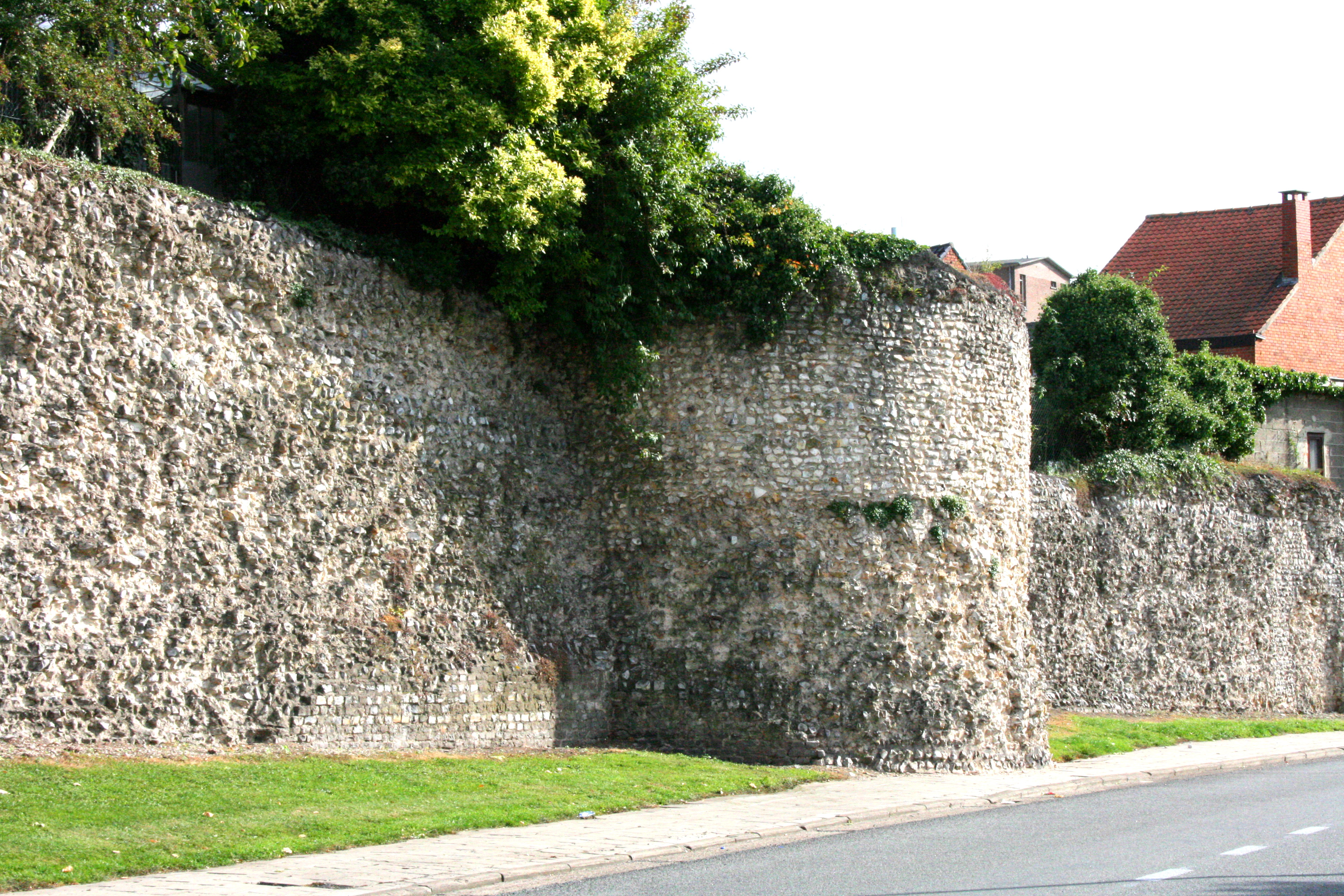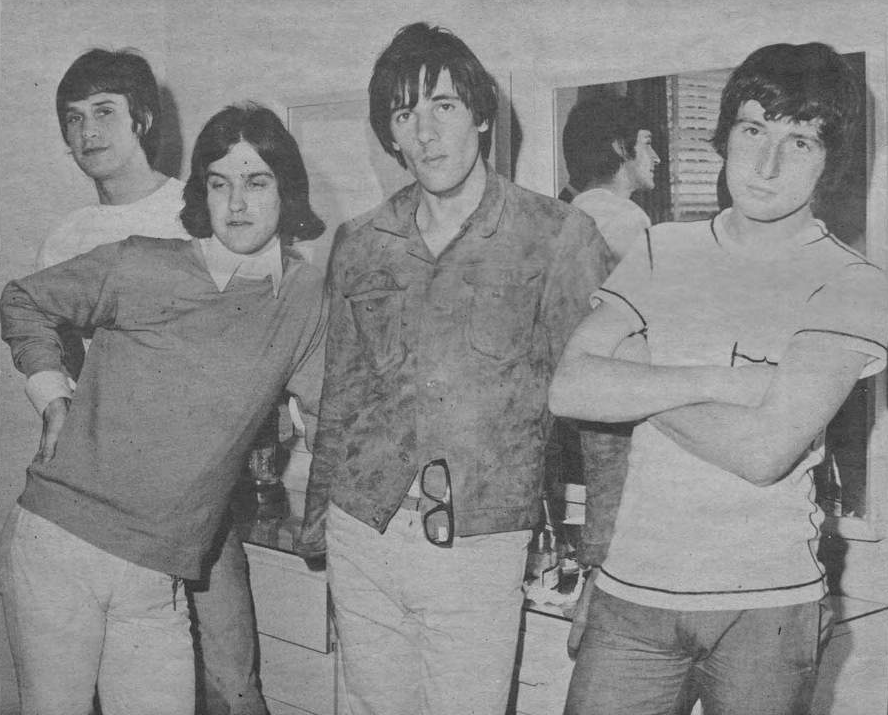|
Bilzen
Bilzen () is a former Municipalities of Belgium, municipality and City status in Belgium, city located in the Belgium, Belgian province of Limburg (Belgium), Limburg. In 2021, Bilzen had a total population of 32,536. The total area is 75.90 km2 which gives a population density of 426 inhabitants per km2. Bilzen consists of the city of Bilzen and the following villages: Beverst, Eigenbilzen, , , , , , , , Rijkhoven, , and . It was in 1977 that they all became part of the municipality Bilzen because of the fusion of municipalities. Cities in Bilzen's neighbourhood are all within a distance of some 10 to 15 kilometers: to its north, Genk; to its east, Maastricht (Netherlands); to its south Tongeren; and to its north-west, Diepenbeek. From 1965 to 1981 Bilzen hosted Jazz Bilzen, a jazz and rock festival that lasted several days. In its time Jazz Bilzen was the most important Belgian festival. Artists that performed there were, among many others, Humble Pie, The Moody Blues, Dee ... [...More Info...] [...Related Items...] OR: [Wikipedia] [Google] [Baidu] |
Jazz Bilzen
Jazz Bilzen was an annual multi-day open air jazz and pop festival that took place from 1965 to 1981 in the Belgian city of Bilzen. Jazz Bilzen was the first festival on the continent where jazz and pop music were brought together. For this reason, Jazz Bilzen is sometimes called the "mother of all European festivals". History Like the National Jazz and Blues Festival in the United Kingdom, and the Jazz Festival International in Comblain-la-Tour, which were paradigms, Bilzen started out solely as a jazz festival. Pretty soon however blues, skiffle, beat, folk and soul, in the end even punk, reggae and new wave, came to be incorporated as well. Initially '' Humo'', a popular Belgian weekly magazine, was the main sponsor. After several years, they withdrew because they got fed up with the security branch and the riots they caused. The Festival organisation now had to find different investors (such as Coca-Cola, Ford, provincial newspapers), which was indicative of the beginning of ... [...More Info...] [...Related Items...] OR: [Wikipedia] [Google] [Baidu] |
Beverst
Beverest () is a village in the Belgian province of Limburg and is a submunicipality of Bilzen. It was an independent municipality until the 1977 fusion of the Belgian municipalities. It measures 983 ha and had 3458 inhabitants in 1976. History Archaeological finds testify that people lived here already during the prehistoric times. Beverest was first mentioned as settlement in 1314. Beverst was part of the lordship of Oreye, which itself was a fief of the County of Loon. The earliest known lord of Beverst was Jan de Velroux, who officially took possession of the lordship in 1420. Over time, the fief passed through several families: first the de Velroux family (also known as de Nandrin), then the Hoen van Hoensbroeck family in 1434, and later the de Geloes family in 1588. In 1683, Willem Frans de Geloes sold the lordship to Edmond Godfried Huyn, Baron of Bocholtz and Land Commander of Alden Biesen. From that point on, it belonged to the Teutonic Order. Judicial authority at t ... [...More Info...] [...Related Items...] OR: [Wikipedia] [Google] [Baidu] |
Limburg (Belgium)
Limburg (, ; or ; , ), also known as Belgian Limburg, is a province in Belgium. It is the easternmost of the five Dutch language, Dutch-speaking provinces that together form the Flemish Region, Region of Flanders, which is one of the three main Communities, regions and language areas of Belgium, political and cultural sub-divisions of modern-day Belgium. As of January 2024, Limburg had a population of 0.9 million. Limburg is located west of the Meuse (), which separates it from the similarly-named Netherlands, Dutch province of Limburg (Netherlands), Limburg. To the south it shares a border with the French-speaking province of Liège Province, Liège, with which it also has historical ties. To the north and west are the old territories of the Duchy of Brabant. Today these are the Flemish provinces of Flemish Brabant and Antwerp (province), Antwerp to the west, and the Dutch province of North Brabant to the north. Historically Belgian Limburg is roughly equivalent to the Dutch-s ... [...More Info...] [...Related Items...] OR: [Wikipedia] [Google] [Baidu] |
Eigenbilzen
Eigenbilzen is a village and former municipality in the Bilzen municipality of the Limburg province in the Flemish Community of Belgium. Eigenbilzen was an independent municipality until 1977 when it merged into Bilzen. History The village was first mentioned in 1096 as Eigenbilesen. Prehistoric and Roman remains have been discovered in the area. In 1871 a tumulus was discovered at the Kannesberg which dated from 400 B.C. Furthermore three Roman villas, and a Roman cemetery were discovered. The Roman road connecting Tongeren to Maastricht used to pass through the village. was built in 1423. In 1680, the family of de Heusch de Zangerye became manor of the village, and resided in the castle. The castle was torn down in the early 19th century. In 1864, the Hasselt-Maastricht railway was opened with a station for Eigenbilzen. The railway line was closed for passengers in 1954, and goods in 1992. In 1977, the municipality merged into Bilzen. Near the village is the Zangerheimolen, a ... [...More Info...] [...Related Items...] OR: [Wikipedia] [Google] [Baidu] |
Rijkhoven
Rijkhoven is a village in the Bilzen municipality of the Limburg province in the Flemish Community of Belgium. History The village was first mentioned in 1076 as Rudenchoven. It used to be part of the County of Loon. In 1220 the chapel of Alden Biesen was given to the Teutonic Order who establish a commandery. In 1870, Rijkhoven became an independent municipality. In 1971, the municipality merged with Kleine- en Grote-Spouwen into Spouwen. In 1977, Spouwen merged into Bilzen. The Alden Biesen Castle is located near the village, and was the commandery of the Teutonic Order. The current building has been constructed between the mid-16th century and the late 18th century. Notable people * Johan Capiot (1964), road racing cyclist. *Steve Stevaert Steve Stevaert (; born Robert Stevaert ; 12 April 1954 – 2 April 2015) was a Belgian politician of the Flemish Socialist Party: the Socialistische Partij - Anders, SP.A. Biography Stevaert was born on 12 April 1954, in Rijkhoven. Afte ... [...More Info...] [...Related Items...] OR: [Wikipedia] [Google] [Baidu] |
Diepenbeek
Diepenbeek (; ) is a municipality located in the Belgian province of Limburg near Hasselt. On January 1, 2012, Diepenbeek had a total population of 18,337. Its total area is which gives a population density Population density (in agriculture: Standing stock (other), standing stock or plant density) is a measurement of population per unit land area. It is mostly applied to humans, but sometimes to other living organisms too. It is a key geog ... of . The municipality includes the communities and hamlets of Bijenberg, het Crijt, Dorpheide, Keizel, Lutselus, Pampert, Piannesberg, Reitje, Rooierheide, Rozendaal, and Zwartveld. It is home to Hasselt University, slowly expanding towards Hasselt itself. The Limburg Science Park is located on the university campus. References External links * Official website- Only available in Dutch Municipalities of Limburg (Belgium) {{LimburgBE-geo-stub ... [...More Info...] [...Related Items...] OR: [Wikipedia] [Google] [Baidu] |
Tongeren
Tongeren (; ; ; ) is a city and former municipality located in the Belgian province of Limburg, in the southeastern corner of the Flemish region of Belgium. Tongeren is the oldest town in Belgium, as the only Roman administrative capital within the country's borders. As a Roman city, it was inhabited by the Tungri, and known as ''Atuatuca Tungrorum'', it was the administrative centre of the ''Civitas Tungrorum'' district. Since 1 January 2025, it is part of the new municipality Tongeren-Borgloon History ''Atuatuca Tungrorum'' The Romans referred to Tongeren as ''Aduatuca Tungrorum'' or ''Atuatuca Tongrorum'', and it was the capital of the large Roman province of '' Civitas Tungrorum'', an area which covered modern Belgian Limburg, and at least parts of all the areas around it. Before the Roman conquests, this area was inhabited by the group of Belgic tribes known as the ''Germani cisrhenani''. (Despite being known as the ''Germani'', whether they spoke a Germanic languag ... [...More Info...] [...Related Items...] OR: [Wikipedia] [Google] [Baidu] |
Genk
Genk () is a Municipalities of Belgium, municipality and City status in Belgium, city located in the Belgian Provinces of Belgium, province of Limburg (Belgium), Limburg near Hasselt. The municipality comprises only the town of Genk itself. It is one of the most important industrial towns in Flanders, located on the Albert Canal, between Antwerp and Liège. History Celtic and medieval origins Genk probably originated as a Celtic village, and was converted to Christianity in the 10th century. The remains of a little wooden church dating from that period were found in the area. The first mention of Genk as ''Geneche'' can be found in a document dating from 1108, ceding the territory to the Abbey of Rolduc. Politically, Genk belonged to the County of Loon until it was annexed by the Prince-Bishopric of Liège in 1365. 19th century During a century of on-going Industrial Revolution#Belgium, industrialisation further south in Belgium, Limburg (Belgium), Limburg modernised only ... [...More Info...] [...Related Items...] OR: [Wikipedia] [Google] [Baidu] |
Arrondissement Of Tongeren
The Arrondissement of Tongeren (; ) is one of the three administrative arrondissements in the Province of Limburg, Belgium. It is both an administrative and a judicial arrondissement. However, the Judicial Arrondissement of Tongeren comprises the municipalities of Tongeren, Bocholt, Bree, Kinrooi, Meeuwen-Gruitrode, Dilsen-Stokkem and Maaseik in the Arrondissement of Maaseik and the municipalities of As, Genk, Opglabbeek and Zutendaal in the Arrondissement of Hasselt. The arrondissement was created in 1839 to form the Belgian part of the former arrondissement of Maastricht, which ceased to exist due to the splitting of Limburg. The canton of Borgloon was also moved from the arrondissement of Hasselt to the new arrondissement of Tongeren. Municipalities The Administrative Arrondissement of Tongeren consists of the following municipalities: * Alken * Bilzen-Hoeselt * Heers * Herstappe * Kortessem * Lanaken * Maasmechelen * Riemst * Tongeren-Borgloon * Voeren * ... [...More Info...] [...Related Items...] OR: [Wikipedia] [Google] [Baidu] |
Population Density
Population density (in agriculture: Standing stock (other), standing stock or plant density) is a measurement of population per unit land area. It is mostly applied to humans, but sometimes to other living organisms too. It is a key geographical term.Matt RosenberPopulation Density Geography.about.com. March 2, 2011. Retrieved on December 10, 2011. Biological population densities Population density is population divided by total land area, sometimes including seas and oceans, as appropriate. Low densities may cause an extinction vortex and further reduce fertility. This is called the Allee effect after the scientist who identified it. Examples of the causes of reduced fertility in low population densities are: * Increased problems with locating sexual mates * Increased inbreeding Human densities Population density is the number of people per unit of area, usually transcribed as "per square kilometre" or square mile, and which may include or exclude, for example, ar ... [...More Info...] [...Related Items...] OR: [Wikipedia] [Google] [Baidu] |
The Kinks
The Kinks were an English rock band formed in London in 1963 by brothers Ray Davies, Ray and Dave Davies, and Pete Quaife. They are regarded as one of the most influential rock bands of the 1960s. The band emerged during the height of British rhythm and blues and Merseybeat, and were briefly part of the British Invasion of the United States until their The Kinks' 1965 US tour#Ban, touring ban in 1965. Their third single, the Ray Davies-penned "You Really Got Me", became an international hit, topping the charts in the United Kingdom and reaching the Top 10 in the United States. The Kinks' music drew from a wide range of influences, including Rhythm and blues, American R&B and rock and roll initially, and later adopting British music hall, Folk music, folk, and country music, country. The band gained a reputation for reflecting English culture and lifestyle, fuelled by Ray Davies' observational and satirical lyricism, and made apparent in albums such as ''Face to Face (The Kinks ... [...More Info...] [...Related Items...] OR: [Wikipedia] [Google] [Baidu] |
The Cure
The Cure are an English Rock music, rock band formed in Crawley in 1976 by Robert Smith (musician), Robert Smith (vocals, guitar) and Lol Tolhurst (drums). The band's current line-up comprises Smith, Perry Bamonte (guitar and keyboards), Reeves Gabrels (guitar), Simon Gallup (bass), Roger O'Donnell (keyboards), and Jason Cooper (drums). Smith has remained the only constant member throughout numerous line-up changes since the band's formation, though Gallup has been present for all but two of the band's studio albums. The Cure's debut album ''Three Imaginary Boys'' (1979), along with several early singles, placed the band at the forefront of the emerging post-punk and New wave music, new wave movements that were gaining prominence in the United Kingdom. The band adopted a new, increasingly dark and tormented style beginning with their second album ''Seventeen Seconds'' (1980), which, together with Smith's fashion sense, had a strong influence on the emerging genre of gothic roc ... [...More Info...] [...Related Items...] OR: [Wikipedia] [Google] [Baidu] |





